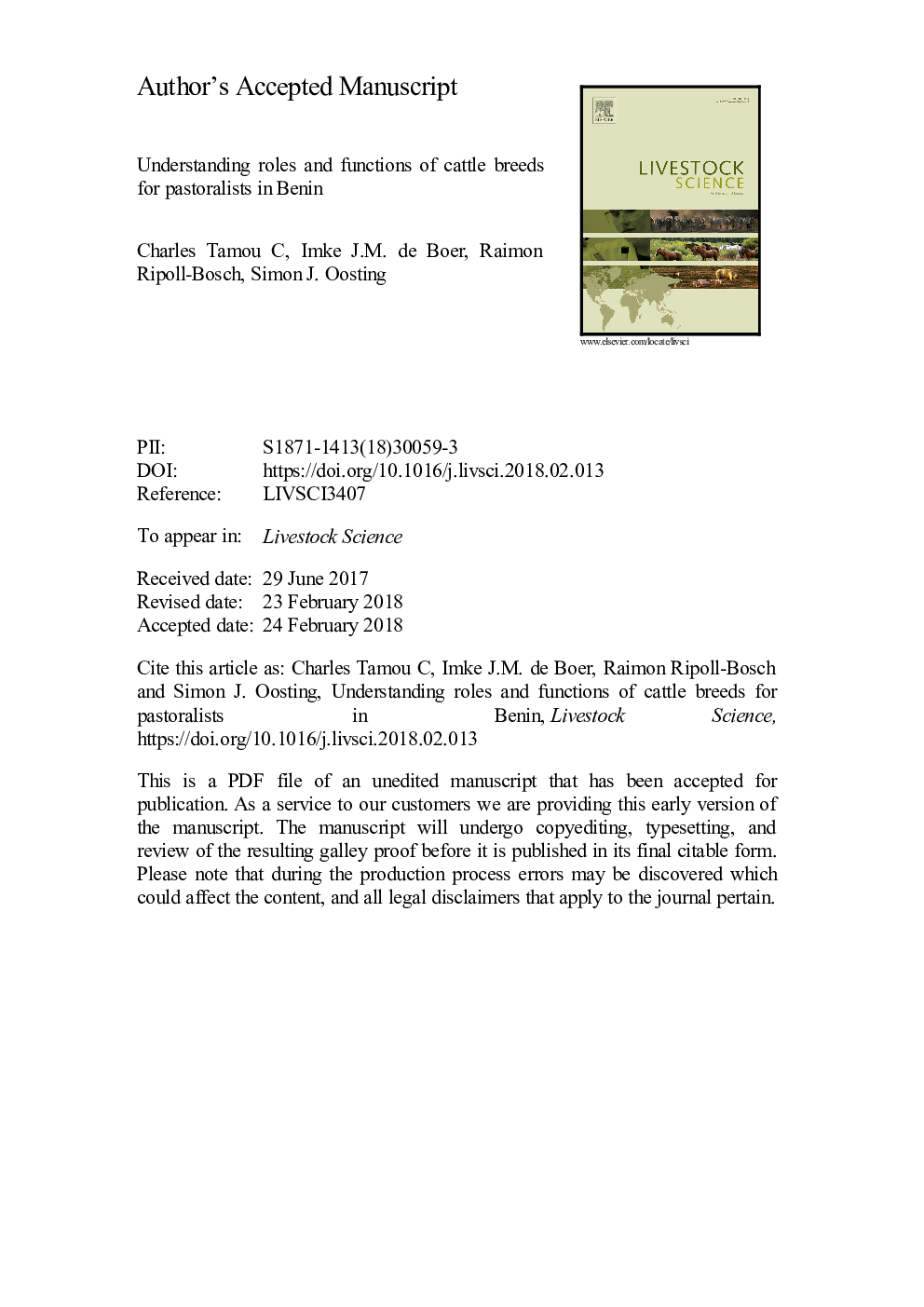| کد مقاله | کد نشریه | سال انتشار | مقاله انگلیسی | نسخه تمام متن |
|---|---|---|---|---|
| 8502015 | 1553922 | 2018 | 29 صفحه PDF | دانلود رایگان |
عنوان انگلیسی مقاله ISI
Understanding roles and functions of cattle breeds for pastoralists in Benin
ترجمه فارسی عنوان
درک نقش و عملکرد حیوانات گاو برای گاو نر. در بنین
دانلود مقاله + سفارش ترجمه
دانلود مقاله ISI انگلیسی
رایگان برای ایرانیان
موضوعات مرتبط
علوم زیستی و بیوفناوری
علوم کشاورزی و بیولوژیک
علوم دامی و جانورشناسی
چکیده انگلیسی
Animal genetic resources (AnGR) are essential for food security and the livelihoods of many pastoralists. However, the AnGR diversity is currently being eroded, as well as the traditional ecological knowledge associated to the use of indigenous breeds and their environment. The objectives of this study were to: i) inventorise indigenous breeds of cattle and their performance in selected traits, ii) analyse pastoralists' preferences for specific breeds and reasons for that, and iii) determine whether the knowledge about breeds and their traits was transmitted across generations and was consistent across agro-ecological zones. Data were collected through focus groups discussions, and individual interviews with 72 pastoralists. Interviewees belonged to three generations and three agro-ecological zones in the periphery of the W Biosphere Reserve in Benin. From the focus groups discussions we identified the most common breeds in the region (i.e. Keteeji, Jaliji, Bodeji, Tchiwali and Gudali) and the most relevant traits (i.e. milk production, meat production, endurance and tolerance to trypanosomiasis) to assess cattle breeds according to pastoralists. Individual interviewees scored the performance of cattle breeds in the four main traits based on a three-point scale. Finally, we determined the consistency of pastoralists' knowledge across generations and agro-ecological zones. Keteeji was valued for its endurance and tolerance to trypanosomiasis, Bodeeji was highly valued for endurance and Gudali was perceived of high value for meat and milk production, but of low value for endurance. Keteeji was the preferred breed by the majority of the pastoralists (nearly 50%), especially for the adaptive trait withstanding hunger. Gudali was the least preferred breed (11%). 80% of pastoralists selected a preferred cattle breed based on adaptive traits, i.e. withstanding hunger, intelligence (beyond obedience to herder) or withstanding disease. Pastoralists' knowledge about breed traits did not differ among generations, but some differences appeared among agro-ecological zones. This study suggests that pastoralists prefer adaptive traits of breeds over production traits to deal with the changing and unfavourable conditions of their environment.
ناشر
Database: Elsevier - ScienceDirect (ساینس دایرکت)
Journal: Livestock Science - Volume 210, April 2018, Pages 129-136
Journal: Livestock Science - Volume 210, April 2018, Pages 129-136
نویسندگان
Charles Tamou, Imke J.M. de Boer, Raimon Ripoll-Bosch, Simon J. Oosting,
